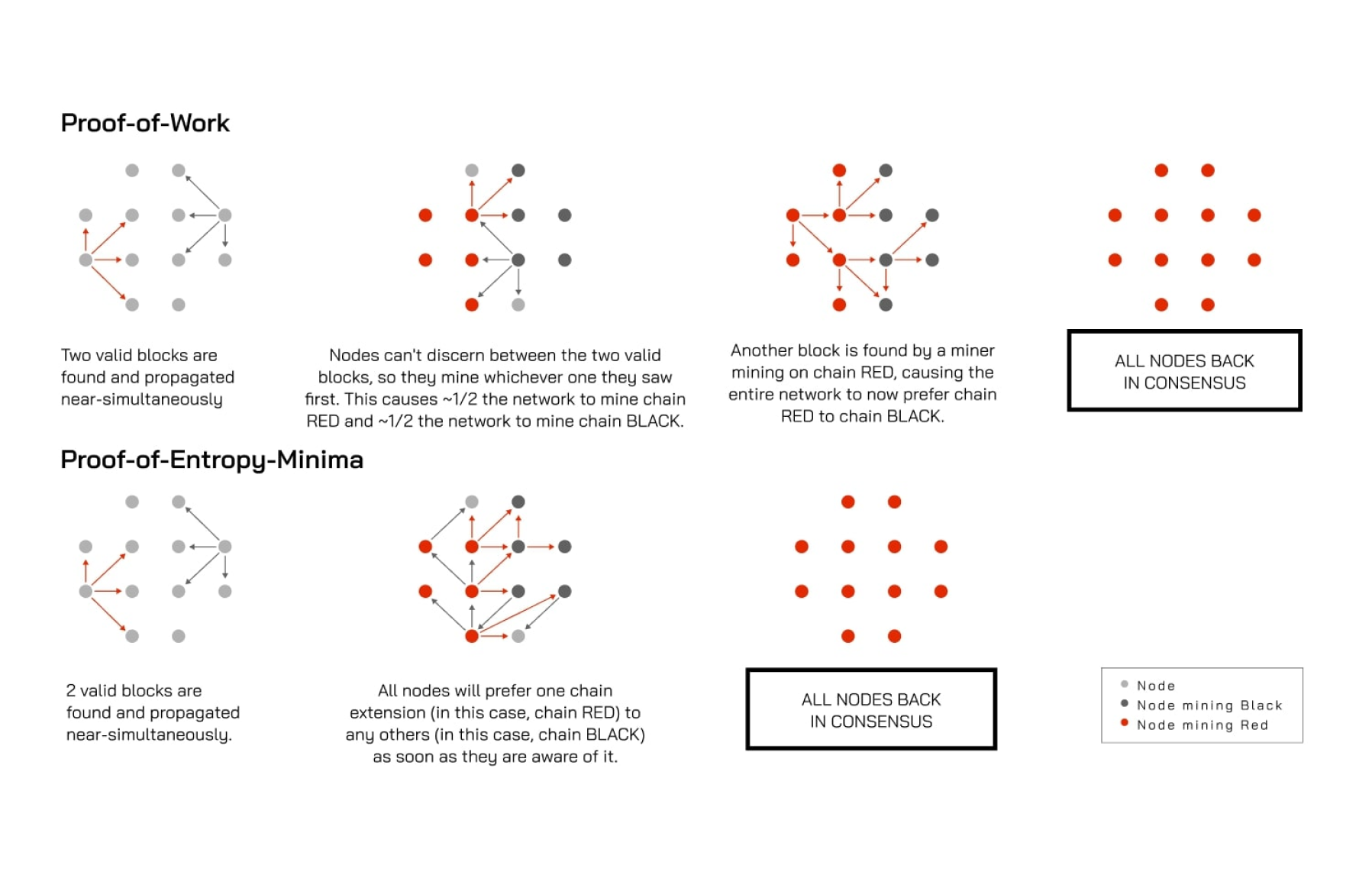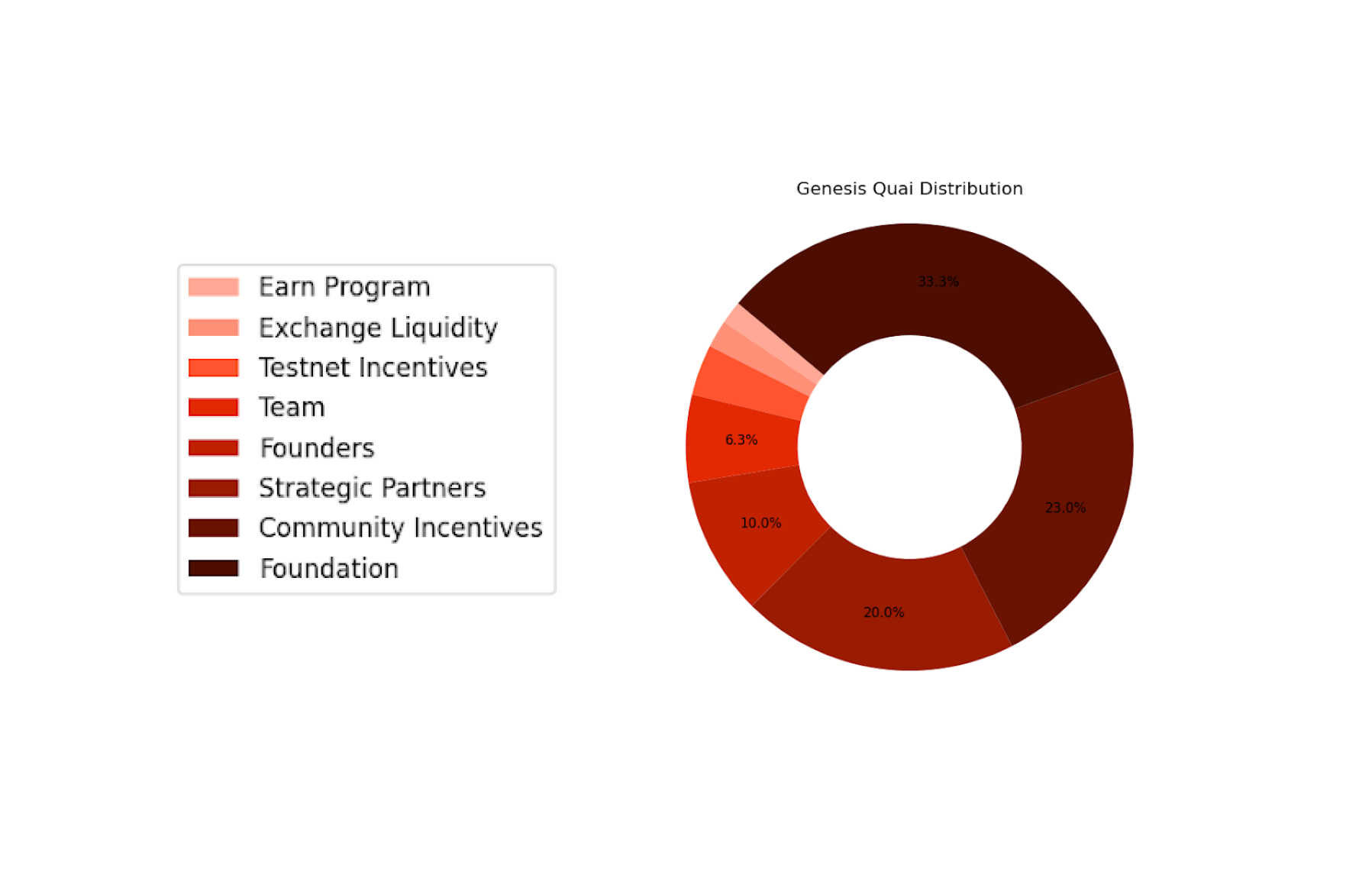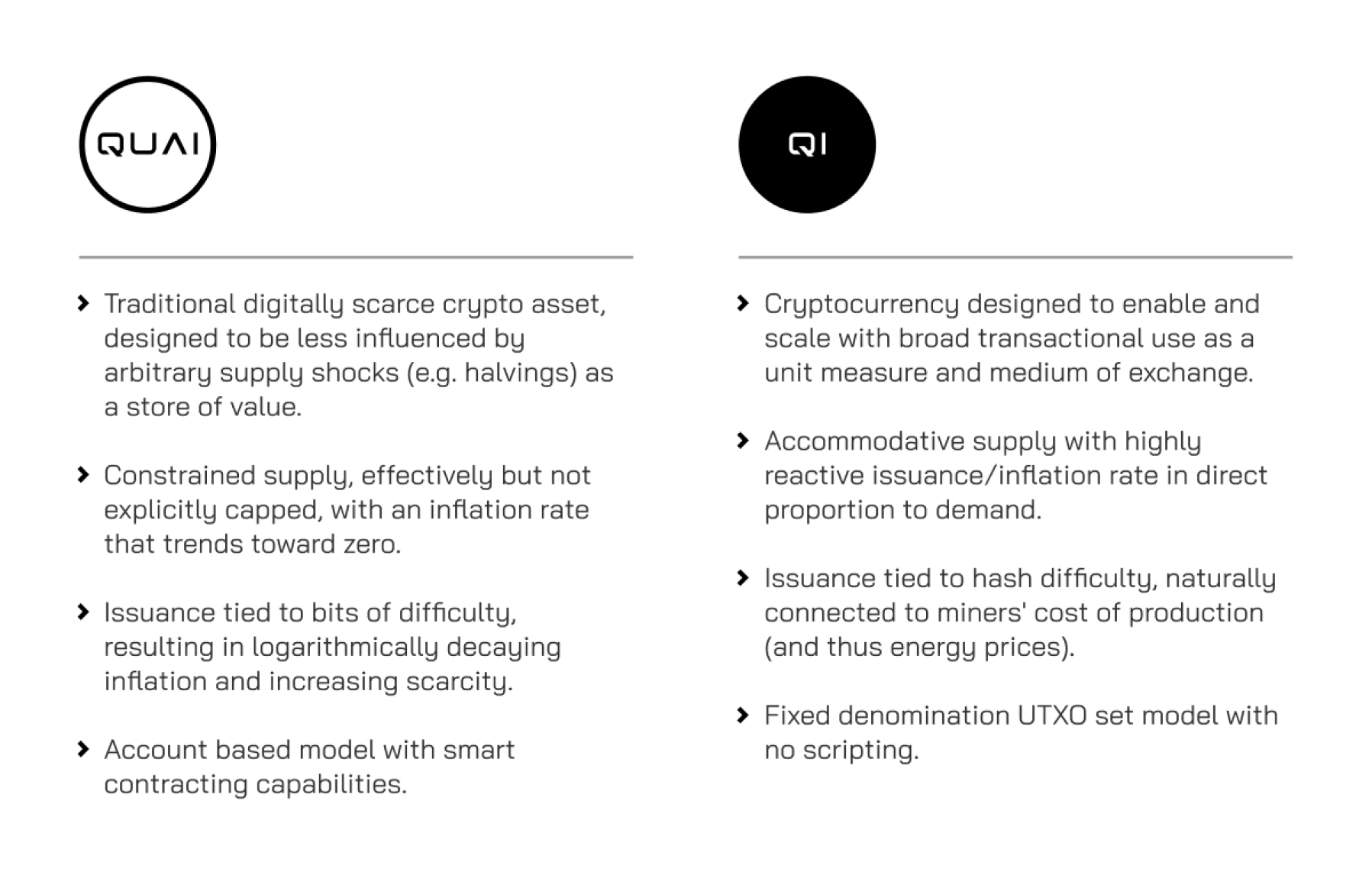Quai Ecosystem Overview
Key Insights
- Currently, the Quai project is in the testnet and development phase, having received investment from venture capital firms Polychain Capital and Alumni Ventures
- Quai Network provides flexible and versatile dual-token system including two types of tokes: Quai and Qi
- We list three cases where Quai Network and its tokens can be used
What is Quai Network
The Quai Network project originated in 2019 as part of a research study at the University of Texas by a team consisting of Yanni Georghiades, Alan Orwick, Jonathan Downing, Karl Kreder, and Sriram Vishwanath. They formed Dominant Strategies, the parent company of Quai Network.
The project's whitepaper was released in 2021, and since then, Quai Network has been actively developing its Layer 1 network of EVM-compatible blockchains. Quai Network's goal is to address the blockchain "trilemma" by creating a decentralized, scalable, and secure blockchain solution.
Users can get cryptocurrency for fiat or crypto on SimpleSwap.
Technical Components of Quai Network
Proof of Entropy Minima Consensus Mechanism
The Proof of Entropy Minima (PoEM) consensus mechanism is a novel approach inspired by Bitcoin's Proof of Work (PoW) algorithm but designed to be more efficient.
In PoEM, miners generate hashes similar to PoW, but the mechanism also evaluates the intrinsic weight of each block to calculate the entropy, or randomness, removed by each block. This ensures that all nodes are consistently in a state of "perpetual consensus." The PoEM mechanism offers faster finality and instantaneous fork resolution compared to both PoW and PoS algorithms.

Credits: [Quai Documentation]
Prime Chain and Region Chains
Quai Network introduces a unique architecture featuring a hierarchy of chains based on the Proof of Entropy Minima (PoEM) framework. At the core of this network is the Prime Chain, serving as the foundation for security and overall network operations. Every miner contributes to the Prime Chain, which features high difficulty but limited throughput.
Beneath the Prime Chain are three Region Chains, each offering reduced difficulty and increased throughput compared to the Prime Chain. Within each Region Chain are three Zone Chains, featuring minimal difficulty and maximum throughput. This hierarchical structure results in a total of 13 chains operating within Quai Network, each with varying levels of security and throughput capacity.
To ensure the seamless operation of the entire system, Quai Network employs a "coincident blocks" mechanism. Coincident blocks refer to blocks that receive confirmation from both Zone, Region, and Prime chains. While each chain can execute operations independently, they all depend on the security guarantees provided by the Prime Chain.
Merged Mining
Merged Mining is a key feature of Quai Network, enabling a single node to simultaneously mine and secure multiple blockchains without requiring additional hardware or energy consumption. This functionality is made possible by the uniform hashing mechanism across all Quai networks, facilitated by the PoEM consensus.
In the Quai Network, each miner participates in merged mining across three networks, each representing a different tier within the Quai hierarchy. This approach enhances energy efficiency compared to traditional PoW blockchains, optimizes block space utilization, and bolsters on-chain security.
Additionally, merged mining capabilities pave the way for the creation of merged-mined parachains. These parachains leverage the merged-mining power of Quai Network to bootstrap their security, further enhancing the overall robustness of the network.
Key Features of Quai Network
- Interoperability
Quai Network boasts interoperability across all its chains, allowing transactions to flow seamlessly between Zone chains. This interoperability ensures that Quai functions as a unified system, with cross-chain transactions referred as external transactions (ETXs) and utilizing hash-linked references. Multi-chain smart contracts and cross-chain interactions are supported, offering developers flexibility in deploying dApps across the network.
- EVM-Compatibility
Quai Network supports EMV-compatible smart contracts, along with MEV-resistant transaction ordering. This compatibility enhances the network's usability across various use cases, including DeFi, gaming, DAOs, and NFTs.
- Scalability
Quai Network is designed for scalability, capable of achieving up to 50,000 transactions per second (TPS) with minimal fees (less than a penny per transaction). This scalability positions Quai Network as a competitive solutioncompared to leading blockchain platforms like Solana.
- Decentralization
Quai Network aims to achieve a high level of decentralization through the implementation of sharding technology. Sharding, a widely recognized concept in the blockchain space, reduces network congestion and enhances decentralization by creating new chains, known as shards. With sharding, validators on the Quai Network can process transactions within specific shards rather than the entire network, reducing the barrier to entry for participating as a validator. This approach attracts more validators to the network, thereby enhancing its security and decentralization.
Quai Network Economic Model
Quai Network economic model introduces two tokens: Quai and Qi. Qi is designed to serve as a medium of exchange within the network, facilitating transactions and payments. On the other hand, Quai is positioned as a store of value and programmable currency, offering additional utility within the ecosystem. This dual-token system aims to provide flexibility and versatility in addressing various economic needs and use cases within the Quai Network.
What Is QUAI Token
QUAI token is developing as a traditional cryptocurrency asset, functioning primarily as a store of value. With a limited supply and minimal inflation rate, QUAI's issuance is linked to bits of difficulty, enhancing its scarcity over time.
Additionally, QUAI supports account-based models and incorporates smart contract functionality. According to the official docs, 3B QUAI tokens will be as part of the genesis block with the largest allocations for foundation (33.3%), community incentives (20%), and strategic partners (10%).

Credits: [Quai Documentation]
In contrast, the QI token is tailored for transactional purposes, serving as a unit measure and medium of exchange within the network. QI features a supply mechanism that adjusts according to demand, with issuance tied to hash difficulty and miners' production costs. This design ensures a more flexible and accommodating supply of QI tokensto support transactional activities effectively.
Users can get QI on SimpleSwap.
QUAI and QI Main Features

Credits: [Quai Documentation]
Both QUAI and QI tokens are emitted by the Quai Protocol and function as gas tokens for their respective chains: QUAI for the programmable Quai Networks and QI for the fixed denomination UTXO Qi chains.
These tokens also serve as economic incentives for miners, who have the flexibility to choose either QUAI or QI tokens as their block rewards for securing the Quai Network. Miners can switch between the two tokens at any time, and the block reward adjusts dynamically based on the difficulty calculated for previous blocks.
Furthermore, users have the ability to convert between QUAI and QI tokens using a mint/burn function at the prevailing block reward ratio, providing liquidity and flexibility within the ecosystem.
Quai Network Use Cases
- Programmable Base-Layer
Quai Network and QUAI token can be used in launching EVM-based contracts across various fields, such as DeFi protocols, NFTs, real world asset, and utility tokens. High TPS combined with resilience to censorship provide a seamless transaction experience for users and developers.
- Medium of Exchange
QI token is designed to serve in the on-chain commerce, cross-border payments and can replace USDC and USDT as a universal asset for exchanges.
- Crypto Wallet for storing and Sending Crypto Assets
The first open-source wallet to use in Quai Network will be Pegasus wallet. Pegasus wallet is a browser extension that will be available on Chrome, Edge, Brave, and Firefox browsers. Users will be able to store, send, receive ERC-20 tokens, as well as interact with Dapps, save smart contracts, and manage gas fees on Pegasus.
Summary
Quai Network is a new promising Layer 1 blockchain combining new technologies such as Proof of Entropy Minima consensus algorithm along with already proven solutions like sharding to achieve decentralization, security, and scalability simultaneously.
Quai Network interoperability and EVM compatibility provide a wide range of opportunities of network’s usage, from DeFi protocols to NFTs and gaming industry. High network TPS achieved through the utilization of sharding mechanisms and merged mining makes Quai a competitive player in the L1 landscape.
Dual token economics allows Quai Network to unify the most important use cases of cryptocurrencies: store of value, medium of exchange, and digital finance with QI and QUAI tokens serving as gas tokens with different use cases within the network.
Users can exchange all cryptocurrencies mentioned in this article for fiat or crypto on SimpleSwap.
The information in this article is not a piece of financial advice or any other advice of any kind. The reader should be aware of the risks involved in trading cryptocurrencies and make their own informed decisions. SimpleSwap is not responsible for any losses incurred due to such risks. For details, please see our Terms of Service.


